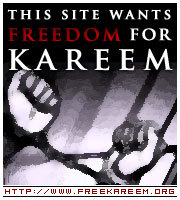A Brief History of "Vande Mataram".
Here is a brief history of our national song, "Vande Mataram". It is a pity that it courts controversy and continues to be debated even after all these years. As long as competitive intolerance afflicts us, I guess we will have to live with it.
In the beginning were just the words. Reportedly one of the leading defenders of the song and of Hindutva has said that the song was written by Bankim Chandra Chatterjee to honour those who sacrificed their lives for the country. To defend the truth about the song from such defenders it needs to be said that when Bankim first wrote it in the early 1870s it was just a beautiful hymn to the motherland, richly-watered, richly-fruited, dark with the crops of the harvests, sweet of laughter, sweet of speech, the giver of bliss. For several years these first two stanzas remained unpublished. In 1881 this poem was included by Bankim in the novel, Anandamath, and now it was expanded to endow the motherland with militant religious symbolism as the context of the narrative demanded. However, the icon of the motherland, “terrible with the clamour of seventy million throats”, likened to “Durga holding ten weapons of war” etc, entered the public imagination much later. This was from the beginning of Bengal’s Swadeshi agitation in 1905. It was sung in the Congress session in Benaras in 1905 (music composed by Tagore), in anti-Partition processions in Calcutta led by Tagore, in meetings addressed by Aurobindo Ghose. The latter hailed Bankim as the rishi of nationalism and translated the poem into English. Many translations were made, including one by Subramaniya Bharathi in 1905. Likewise, far away from Bengal, Mahatma Gandhi took note of the song as early as 1905. What is more, Vande Mataram became a slogan for the common man, to the extent he participated in anti-British agitations. Many of the militant nationalists faced bullets or the gallows with that slogan on their lips. Thus Vande Mataram became sanctified as an intrinsic part of the memories of the fight for freedom. A third phase in the life of the song began in the 1930s when objections began to be raised against the song on two grounds: first, its association with Anandamath, which depicted the Muslims of the Nawabi era of the 1770s in Bengal in a poor light; second, the religious imagery and idolatry implicit in the stanzas of the poem following the first two. (Today those innocent of any knowledge of the song and the novel probably mistake the part for the whole). M.A. Jinnah, as well as a number of Muslim legislators in the provincial assemblies elected in 1937, became vociferous against the recitation or singing of Vande Mataram, a practice introduced by provincial Congress governments. In response to this, as well as pressure of Congress members, Jawaharlal Nehru in October 1937 wrote to Tagore asking for his opinion regarding the suitability of the song as a national anthem. The judgement Nehru received was that the first two stanzas of Vande Mataram should be accepted; as for the later part of the verse, Tagore thought it might offend monotheists, but the song was inextricably associated with the freedom movement and “the sacrifices of the best of our youths” since 1905. Acting upon this advice the Congress Working Committee recommended that “wherever the Vande Mataram is sung at national gatherings, only the first two stanzas should be sung”. Jinnah wrote to Nehru in March 1938 that the decision was not to his satisfaction but the Congress stuck to it; in any event, there was a proviso that any one who wished not to participate was free to do so. From then on the song was a dividing line between those who doubted the wisdom of this compromise (C. Rajgopalachari) and those, led by Nehru, who were opposed to making the song obligatory. In 1939 some provincial governments — like Bihar and Central Provinces — issued specific instructions to education departments clarifying that the song was not obligatory. A fallout was that the slogan ‘Vande Mataram’ acquired special connotation to those who valued the Hindu symbolism in the song and by 1946-47 in some parts of India it became in inter-communal conflicts the battle cry of the Hindu community. The earliest instance of Hindu Mahasabha support to the sanctification of the song is perhaps the ‘Vande Mataram Day’ organised by the party in 1937. The fifth and most recent phase in the life of the song commenced in the Constituent Assembly on January 24, 1950, when it was sung at the end of its deliberations. It was resolved that while Jana Gana Mana was identified as the national anthem, equally with it Vande Mataram was to be recognised. It was a motion from the chair, moved by Rajendra Prasad himself, and unlike other parts of the Constitution it was never debated upon in the Constituent Assembly.[IE] |
Related Link: Here is Nitin Pai in defence of the right not to sing Vande Mataram.






No comments:
Post a Comment